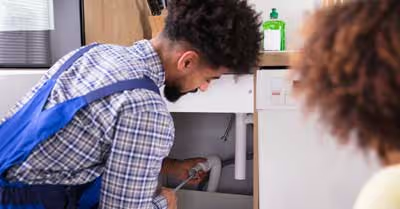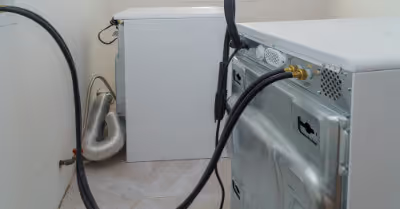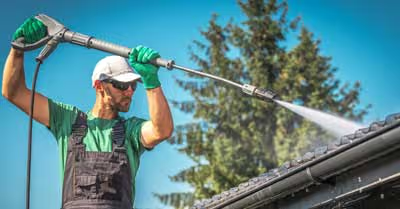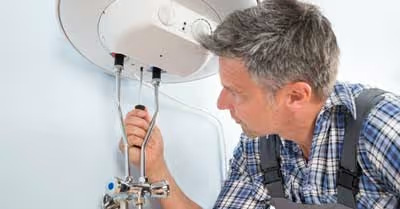Table of Contents
Bed Bugs Characteristics
Needless to say, bed bugs are blooding-eating pests. In other words, they require blood to survive and breed. However, they are not like ticks in the sense that they don’t have to live or cling on a host. Instead, they’re pesky little critters that will crawl around on your bed, carpets, and clothes and suck on your blood at every opportunity.
Again, they cannot fly like mosquitoes and will have to crawl to access their food source: you and your loved ones. They cannot travel great distances on their own and will attach themselves to movable objects such as clothing, furniture, and bedding. This means that they are expert hitchhikers and will easily move around via your luggage, clothing, furniture, and bedding. You’re likely to carry them from the gym, the motel, hotels, public transport, stores, office, and even from your neighbor or friend’s place.
While many people believe that bed bug infestation is caused by filth, this is one of the greatest pest misconceptions you’ll ever come across. The truth is, bed bugs are not attracted to dirt or decay and can be present even in the cleanest of homes as long as the can access their food source: your blood.
To survive, mate, and breed, bed bugs must feed on blood at least once in a fortnight. They can, however, still survive for months without any meal. With sufficient blood meal, a female bed bug can lay around 3 eggs daily and about 500 eggs in her lifetime.
So How Do You Get Rid of Bed Bugs?
Our experts devised the following step-by-step instructions on how to get rid of bed bug infestation in your home.
Stop the Biting
The first crucial step in eliminating bed bugs is to stop them from biting you while you’re sleeping. This means that the bed bugs cannot feed and if they can’t feed, they can’t reproduce or breed. As a result, the infestation can’t grow any further. You can do this by creating a safe place to sleep.
But because bed bugs will eventually follow you, it’s vital to immediately strip all the sheets, pillowcases, and other bedding from your bed. Seal them in plastic garbage bags to prevent the bed bugs from escaping or infesting other areas of your home. You can take the bags straight to the washing machine and wash the bedding using a hot water setting. You should then dry them on high heat. This is a sure way to kill any existing bed bugs or eggs on the bedding.
Look for the Bed Bugs Everywhere
It’s important to carry some investigative work. Because of their tiny size and ability to hide you should thoroughly look everywhere within your home. While bedrooms are the foremost locations of bedbugs, they can hide just about anywhere. Using a bright flashlight and a magnifying glass (if you have one), look bed bugs everywhere but pay close attention to sitting areas and bedrooms. Look for anything that appears brown to reddish-brown, pale yellow eggs, as well as a distinct smell.
Do not leave anything or any place unturned. They can hide anywhere including in cracks, crevices, on shelves, in racks, behind wall posters, behind electrical switch plates, and even between books and magazines! You should also dismantle the bed frames and all the sleeping and sitting areas. In essence, bed bugs are very elusive pests that need thorough investigative work to determine their hiding places. It’s vital to check the following areas:
- Bedding, Mattresses, and box springs
- In furniture and hardwood floors
- Under the carpet
- In curtains, behind wallpapers, and wall poster
- In shelves, racks, books, and magazines
- In wardrobes and piles of clothing
Do Not Throw Your Bed and Bedding Away
We always advise our readers and clients not to throw their beds and bedding away. It’s not only unnecessary but also very expensive. Even if you throw your bed and bedding away and buy new ones, odds are they’ll be infested. If anything, you should use the money to help you eliminate the bed bugs.
Prepare the Infested Areas
Carrying out extensive cleaning of your house is an effective step in getting rid of bed bugs. It’s crucial to strip all the beds to the bare sleeping surfaces and wash them in very hot water (usually 120ºC). You should also remove personal items, clean them with a vacuum cleaner and seal them in a plastic bag for several weeks or more. Vacuum every place including the walls, cracks, crevices, the mattresses, beds, floors furniture, and everywhere else.
Attack the Bed Bugs
After vacuuming everything, you should use a steam machine to hot steam virtually every corner of the room including the mattresses, carpet, bedding, and furniture at about 60ºC. Although hot steaming the room will not entirely eradicate the bed bugs, it will eliminate most of them before the final treatment.
And because you shouldn’t leave anything to chance, you should also consider cold steaming your home. Intensely cold temperatures of about -18ºC can kill the bed bugs but it would take at least 4 days for the cold temperature to kill the bed bugs and their eggs.
Spray Bed Bug Killers
While heat, cold, and steam treatments can eradicate a huge portion of bed bugs from your home, they might not eliminate the infestation entirely. This is why you should use various EPA-certified pesticides to fight the bed bugs.
Here are some pesticides to try:
Desiccants – This can destroy the bugs’ protective out coating. Without this coat, the bed bugs will dry out and die. Although they work slowly and may take up to a month, bed bugs cannot become resistant to them.
Neonicotinoids – Keep in mind that bed bugs will eventually become resistant to them but they can damage the bugs’ nervous system and kill them.
Pyrrole, Pyrethroids, and Pyrethrins – These are the most common pesticides used in eliminating bed bugs. They can kill bed bugs by disrupting their cells.
Bug Bombs or Foggers – This can instantly kill bed bugs but cannot penetrate cracks and crevices. They can also become toxic to humans if used incorrectly. You should, therefore, read the instructions carefully and leave the room before you set bug bombs.
Plant oil-based products – They work well in eradicating bed bugs and are less toxic than the above-mentioned solutions.
But because you do not want to leave anything to chance, you should consider using all the above-mentioned methods, albeit safely. More importantly, you should ensure that you, your loved ones, and pets are safe, especially when using pesticides. You should not fail to follow instructions carefully as stated in the labels as this illegal and can be fatal.
Monitor the Affected Areas
As noted earlier, eliminating bed bugs requires you to remain calm, diligent, patient, and committed. It can take quite some time to remove them completely, so you should work diligently until the end result is achieved. You should, therefore, check out for the bed bugs once every 7 days until that time when you’re fully sure that you’ve successfully eradicated bed bug infestation in your home.
Remember, bed bugs are hardy pests. Don’t be surprised if you might spot them when you thought you had completely wiped them out. This is essentially why you should try different methods until that time when they are fully eradicated.
The Do’s and Don’ts of Bed Bug Removal
Regardless of the removal approach that you choose to follow, you should be familiar with the following bed bug removal do’s and don’ts if you want to be successful.
The Do’s
- Use bed bug traps
- Use heat treatments
- Thoroughly treat your mattress and box spring
- Wash and dry clothes with high heat
- Use Silica Gels
Buy a mattress encasement
The Don’ts
- Throw away your belongings
- Panicking
- Giving the bed bugs time to multiply
- Not following instructions carefully especially when using pesticides
Final Thoughts
Bed bugs are truthfully frightening pests with extraordinary hiding and survival skills. You should, however, not let them overwhelm you and make your home a living hell. With the above-discussed strategies, you can eliminate bed bugs and turn your home into a paradise that it should always be.
Recent Articles
















